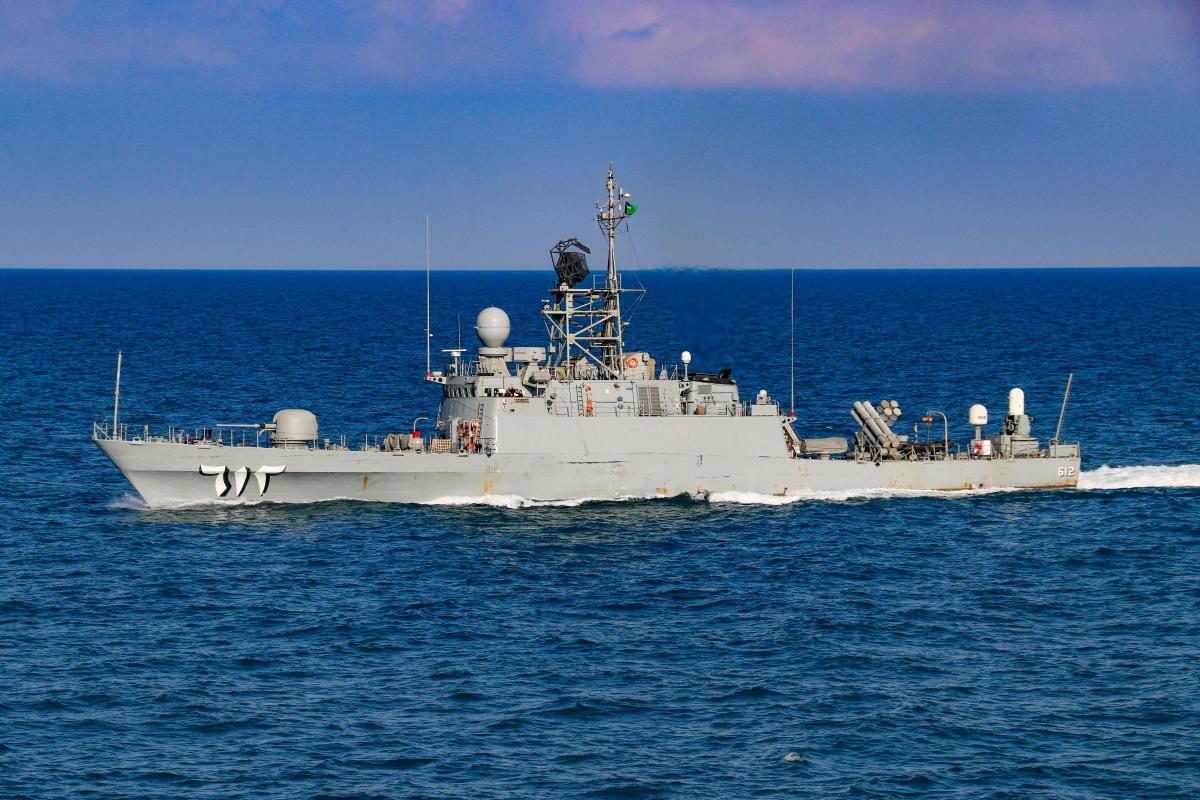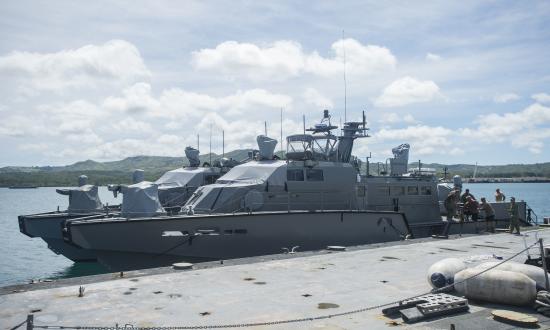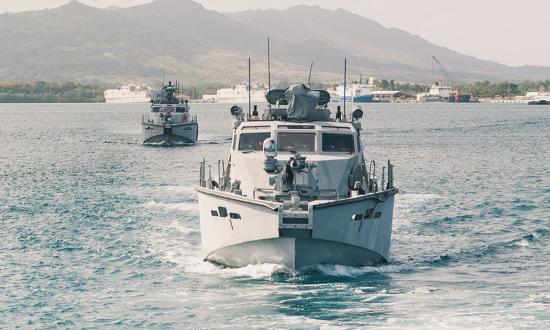For more than 25 years, the Navy has been grasping for an affordable, reliable, capable, present, small surface combatant. Today, as the littoral combat ships (LCSs) are finally conducting routine deployments, it is ironic that what the Navy was looking for was built in a U.S. shipyard in the 1980s—it was just exported to serve in a partner’s navy. That ship is the Badr-class corvette.
While the LCSs are finally becoming what they were intended to be—now with the addition of over-the-horizon weapons. The two different classes—Freedom and Independence—have provided jobs at several shipyards to support the construction efforts. The modern LCS designs and novel propulsion systems come at a price, however. In addition to the average cost per hull of about $500 million, per hull operating costs are running $50 million per year—staggering amounts for a small combatant.
With the decommissioning of the Cyclone-class patrol coastal warships already having begun, and the Mk VI patrol boats facing the same fate, the LCSs are the smallest combatant the Navy will have for the decade or two. Yet, at more than 3,000 tons, the LCSs are anything but small. And because of their high cost and other problems, procurement has been capped.
If the Navy wants to grow the fleet (and replace the Cyclone-class PCs) with a capable, well-armed, inexpensive, small combatant, it should build Badr-class corvettes. At just over 1,000 tons displacement, powered by an LM-2500 gas-turbine engine and two MTU diesels, and brandishing eight Harpoon missiles, six torpedoes, and a 76-mm gun, these ships are well-armed, fast, and capable.
In the 1970s and 1980s, Saudi Arabia purchased four Badr-class corvettes, built by Tacoma Boatbuilding in Washington state. All four are still in service today. I personally interacted with one of the ships when the Saudis were patrolling for illicit trafficking in the Red Sea. I was operations officer in Forrest Sherman (DDG-98) at the time, and I was afforded the opportunity to visit Badr and share best practices. Immediately after boarding her, you could tell she was built for combat. Small, lean, but packed from stem to stern with many of the same weapons Forrest Sherman had, she made quite an impression.
The Badrs have systems that are still fielded in the Ticonderoga-class cruisers and Arleigh Burke–class destroyers, including the LM-2500 gas turbine, the SPS-40 and SPS-55 radars, Harpoon missiles, and the Vulcan Phalanx close-in weapon system. With mature sensors and weapons, the parts and infrastructure already exist to support these ships. New-construction corvettes could easily be upgraded with new sensors and weapons as needed. Though a Badr is a quarter the size of an LCS (and would likely cost a quarter of the price), it possesses comparable antisurface (ASUW) and antisubmarine (ASW) capabilities.
When evaluating the capability of a Badr, it is easy to focus on it as a single platform. Versatile and lethal on its own, it could be viewed as the small surface combatant the Navy really wanted. However, further reflection reveals that the ship, while formidable on its own, also complements the other surface combatants currently in the Navy’s inventory. Badr's speed and endurance permit it to keep up with destroyers. Its sensors would permit easy integration into data architectures. Moreover, its Harpoon missiles (which could be replaced/upgraded with Naval Strike Missiles) provide an offensive ASUW capability that had to be added to the LCSs—all in a smaller package.
In addition to being easily integrated into existing fleet constructs, the Badr would be able to fulfill the lower-end missions the LCSs and PCs were designed to execute. With its shallow draft (less than 9 feet), a Badr is able to moor in shallower, more austere ports for theater security cooperation missions. It can enforce blockades, conduct counterillicit trafficking missions, and provide scouting and presence. Even with its limited sonar suite and torpedo tubes, it is a worthy opponent against shallow-water submarine threats.
The decommissioning of the PCs leaves the Navy with a capability and force-structure gap the Badr could aptly fill. In addition to retaining early command opportunities for promising junior officers, a few dozen of these corvettes would provide imposing presence in the littorals. Its larger deck gun, antiship missiles, torpedoes, and CIWS, all packed in a small hull and built in the United States, should make the Badr-class corvettes appealing to the Navy and Congress as they seek to add hulls and capability to the fleet.





